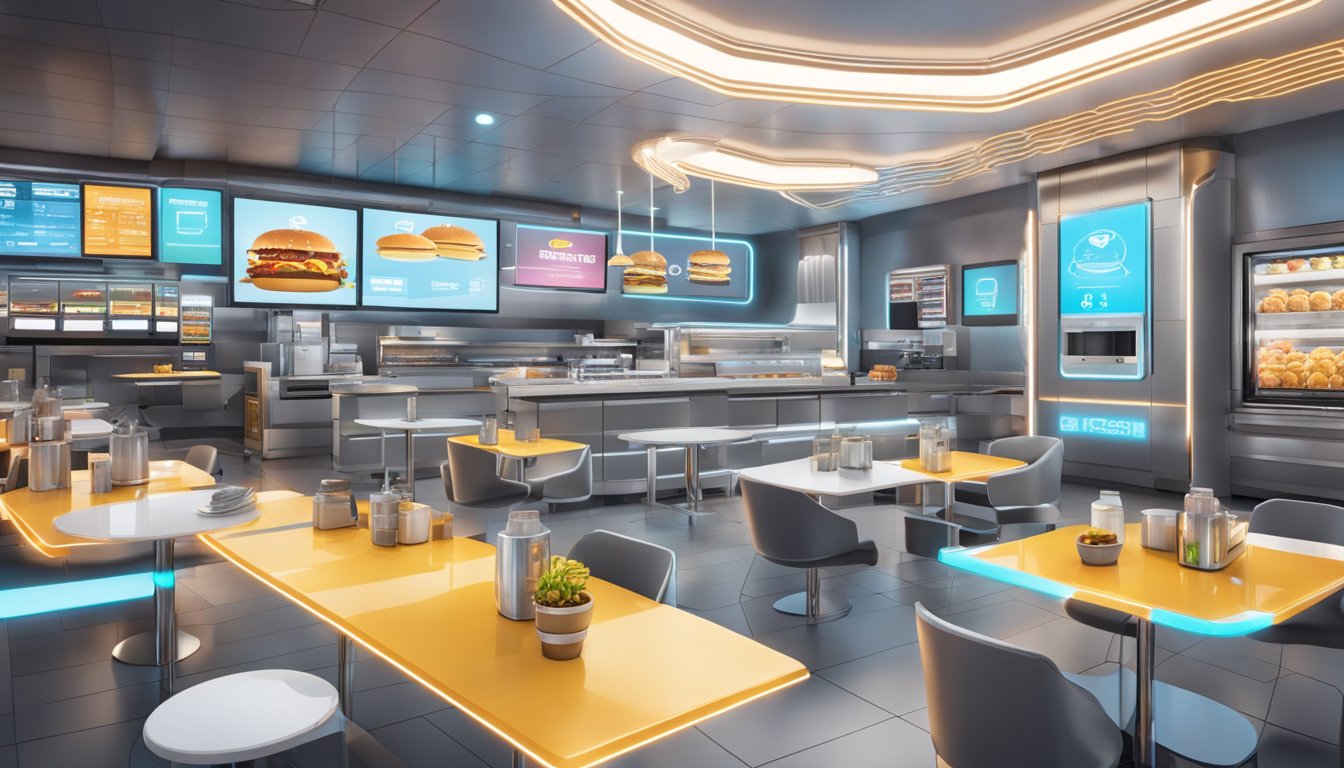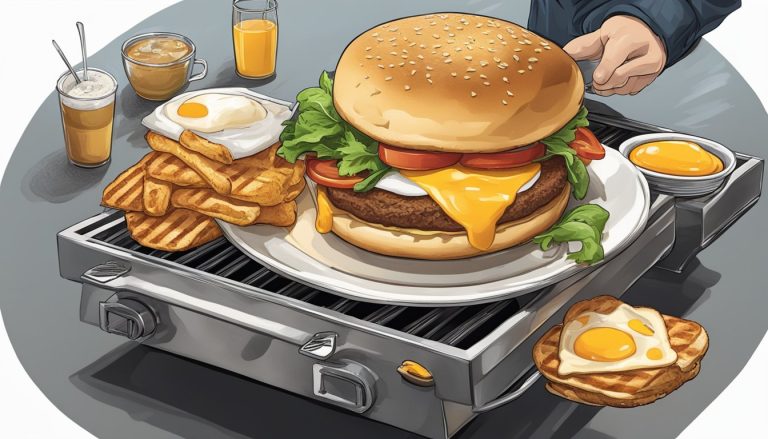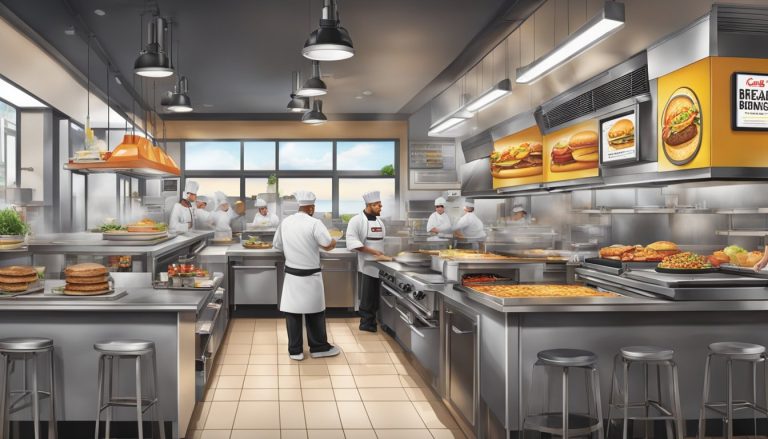Carl’s Jr. has been a major player in the fast food breakfast market for decades, continually innovating to meet changing consumer preferences. As the industry evolves, the chain is setting its sights on the future of morning meals. Carl’s Jr.’s vision for fast food breakfast in 2025 and beyond focuses on sustainability, healthier options, and convenient experiences for busy customers.
The company is embracing eco-friendly practices and menu items to appeal to environmentally conscious consumers. This includes sourcing ingredients more sustainably and reducing packaging waste. At the same time, Carl’s Jr. is expanding its breakfast offerings to include more plant-based and health-focused choices alongside its classic indulgent options.
Technology is also playing a key role in Carl’s Jr.’s breakfast strategy. The chain is investing in mobile ordering, delivery partnerships, and drive-thru innovations to make grabbing breakfast on-the-go even more seamless. As consumer habits and expectations shift, Carl’s Jr. aims to stay ahead of the curve in the competitive fast food breakfast landscape.
Carl’s Jr.: A Legacy of Innovation

Carl’s Jr. has built a reputation for pioneering new concepts in the fast food industry. The chain’s journey from a humble hot dog cart to a global brand exemplifies its commitment to innovation and growth.
History of Carl’s Jr.
Carl Karcher and his wife launched Carl’s Jr. in 1941 with a single hot dog cart in Los Angeles. Their initial $15 investment and $311 loan marked the beginning of a fast food empire. The business quickly expanded from a hot dog stand to a drive-in barbecue restaurant.
By 1956, Karcher had opened the first Carl’s Jr. restaurant in Anaheim, California. The name “Carl’s Jr.” came from the idea that this new restaurant was a “junior” version of Karcher’s full-service restaurant, Carl’s Drive-In Barbecue.
The chain’s rapid growth in Southern California during the 1960s and 1970s set the stage for its future expansion across the United States and internationally.
Innovative Menu Items
Carl’s Jr. has consistently introduced new menu items to stay ahead of food trends. In 1977, it became the first fast food chain to offer self-serve salad bars in all its California locations.
The brand pioneered the concept of “premium” fast food burgers in the 1980s with the introduction of the Western Bacon Cheeseburger. This trend continued with items like:
- The Six Dollar Burger (2001)
- Hand-breaded chicken tenders (2010)
- All-natural, antibiotic-free beef patties (2015)
- Beyond Meat plant-based burgers (2019)
These innovations have helped Carl’s Jr. maintain its position as a leader in the fast food industry.
Strategic Partnerships and Expansion
Carl’s Jr.’s growth strategy has focused on both domestic and international expansion. The chain merged with Hardee’s in 1997, creating CKE Restaurants Holdings, Inc. This merger allowed for rapid expansion across the United States.
Internationally, Carl’s Jr. has pursued franchising agreements to enter new markets. Key expansion milestones include:
- First international location in Mexico (1991)
- Entry into Asia with restaurants in Singapore (2005)
- Expansion into Europe with a location in Denmark (2011)
The brand now operates over 1,000 domestic locations and 1,000 international locations across 40 countries. Strategic partnerships with local franchisees have been crucial to this global growth, allowing Carl’s Jr. to adapt its menu and marketing to diverse cultural preferences.
Current State of the Fast Food Industry

The fast food industry is evolving rapidly to meet changing consumer preferences. Chains are adapting their menus and operations to satisfy demands for higher quality, more variety, and healthier options.
Consumer Demand for Quality and Variety
Fast food restaurants are expanding their offerings beyond traditional burgers and fries. Many chains now feature premium ingredients, artisanal breads, and gourmet toppings to appeal to more discerning palates.
Customization has become a key trend, with build-your-own concepts gaining popularity. Consumers appreciate the ability to personalize their meals.
Global flavors are making their way onto fast food menus, reflecting America’s increasingly diverse tastes. Korean, Mediterranean, and fusion cuisines are appearing alongside classic American fare.
Plant-based alternatives have surged in availability, catering to vegetarians, vegans, and flexitarians. Even major chains now offer meatless burgers and other plant-based options.
Navigating Health Consciousness
Fast food chains are adapting to health-conscious consumers by offering more nutritious choices. Many menus now feature salads, grilled chicken, and fresh fruit options.
Calorie counts and nutritional information are prominently displayed, helping diners make informed decisions. Some chains have reduced portion sizes or introduced lower-calorie menu sections.
Transparency in ingredients has become crucial. Restaurants are highlighting the use of natural, organic, and locally-sourced items to appeal to health-minded customers.
Removing artificial additives and preservatives is a priority for many chains. “Clean label” initiatives aim to simplify ingredient lists and remove controversial substances.
Breakfast at Carl’s Jr.: Beyond the Classics

Carl’s Jr. continues to innovate its breakfast menu, balancing traditional favorites with new, health-conscious options. The chain adapts to changing consumer preferences while maintaining its commitment to quality.
Traditional Offerings and Quality
Carl’s Jr.’s breakfast menu features classic items that have stood the test of time. The Made from Scratch Biscuits™ remain a staple, hand-prepared daily using fresh ingredients. Egg sandwiches and breakfast burritos showcase the chain’s dedication to hearty, satisfying meals.
Quality ingredients are a priority. Carl’s Jr. uses cage-free eggs and premium meats in its breakfast items. The brand has also improved its coffee offerings, partnering with specialty roasters to provide a superior morning brew.
Introducing Plant-Based Alternatives
Responding to growing demand for meat-free options, Carl’s Jr. has expanded its breakfast menu to include plant-based alternatives. The Beyond Breakfast Sausage™ Burrito offers a vegetarian-friendly choice without sacrificing flavor or texture.
Other plant-based items include:
- Veggie egg white sandwich
- Beyond Sausage® biscuit
- Plant-based breakfast bowl
These options cater to health-conscious consumers and those reducing their meat intake. Carl’s Jr. continues to develop new plant-based items to diversify its breakfast lineup.
Regional Flavors and All-Day Options
Carl’s Jr. recognizes the importance of catering to local tastes. The chain has introduced region-specific breakfast items in various markets. For example, a spicy chorizo breakfast burrito is available in select Southwestern locations.
The company is also testing all-day breakfast options in some areas. This move allows customers to enjoy breakfast favorites beyond traditional morning hours. Popular items available all day include:
- Breakfast burger
- Hash rounds
- Breakfast burritos
By offering regional specialties and extended breakfast hours, Carl’s Jr. aims to meet diverse customer preferences and schedules.
Navigating Consumer Tastes with Menu Innovation
Carl’s Jr. adapts to changing consumer preferences through strategic menu innovation, especially in the breakfast category. The fast food chain balances traditional offerings with creative new items to attract and retain customers.
The Role of Breakfast in Fast Food
Breakfast has become a crucial battleground for fast food chains. Carl’s Jr. recognizes the importance of morning meals in driving customer traffic and loyalty. The company’s breakfast menu has evolved from basic options to a diverse array of hearty and indulgent choices.
Carl’s Jr. offers savory biscuit sandwiches and other breakfast items to cater to different tastes. This variety allows the chain to compete effectively in the morning market segment.
Carl’s Jr. Menu Innovations
Carl’s Jr. stays ahead of trends by introducing innovative menu items. The chain has embraced plant-based options to appeal to health-conscious consumers. Its breakfast burger combines the appeal of traditional burgers with morning flavors, creating a unique offering.
The Thickburger line showcases Carl’s Jr.’s commitment to indulgent, premium options. By incorporating trendy flavors like salted caramel into shakes, the chain demonstrates its ability to tap into current taste preferences.
Carl’s Jr. also experiments with “swalty” (sweet and salty) flavors, a trend expected to drive menu innovation in 2025. This approach helps the brand attract younger consumers, particularly Gen Z, who seek bold and exciting flavor combinations.
Operational Excellence for Customer Satisfaction

Carl’s Jr. focuses on streamlining operations and enhancing service quality to boost customer satisfaction. The company invests in technological solutions and employee training to create a seamless dining experience.
Digital and In-Store Ordering Systems
Carl’s Jr. has implemented advanced digital ordering systems to improve efficiency and accuracy. Mobile apps allow customers to customize orders, pay ahead, and schedule pickup times. In-store kiosks provide a user-friendly interface for browsing menus and placing orders without waiting in line.
The company has also integrated artificial intelligence into its drive-thru operations. AI-powered voice recognition systems take orders with high accuracy, reducing errors and speeding up service times. These technologies work in tandem with kitchen management systems to optimize food preparation and delivery.
Carl’s Jr. continues to refine its digital platforms based on customer feedback and usage data. Regular updates ensure the systems remain intuitive and responsive to changing consumer preferences.
Focusing on Quality Service
Carl’s Jr. prioritizes employee training to deliver exceptional customer service. Staff members undergo comprehensive programs covering product knowledge, food safety, and customer interaction skills. The company emphasizes a customer-first mindset, encouraging employees to anticipate and address customer needs proactively.
To maintain consistency, Carl’s Jr. conducts regular quality audits across its locations. These assessments evaluate food quality, cleanliness, and service standards. Managers use the results to identify areas for improvement and implement targeted training initiatives.
The chain has also introduced a customer feedback system that allows real-time responses to concerns. This approach enables swift resolution of issues and demonstrates Carl’s Jr.’s commitment to customer satisfaction. By continuously refining its service standards, the company aims to create a loyal customer base and differentiate itself in the competitive fast food market.
Marketing and Brand Identity of Carl’s Jr.
Carl’s Jr. employs innovative marketing strategies and cultivates a distinctive brand identity to stand out in the competitive fast food landscape. The company focuses on bold campaigns and leveraging digital platforms to connect with its target audience.
Leveraging Social Media and Campaigns
Carl’s Jr. utilizes social media platforms to engage customers and promote its offerings. The brand maintains active profiles on Instagram, Twitter, and Facebook, sharing mouth-watering images of menu items and running interactive contests.
Digital marketing campaigns often feature celebrity endorsements and provocative content to generate buzz. Carl’s Jr. has partnered with influencers to create viral content, increasing brand visibility among younger demographics.
The company also uses targeted ads on streaming platforms and mobile apps to reach potential customers with personalized promotions and limited-time offers.
Building Brand Recognition and Loyalty
Carl’s Jr. has established a recognizable brand identity through its iconic yellow star logo and consistent visual elements across marketing materials. The company’s slogan, “Feed Your Happy,” reinforces its commitment to satisfying customer cravings.
To foster loyalty, Carl’s Jr. implemented a rewards program allowing customers to earn points on purchases. These points can be redeemed for free menu items, encouraging repeat visits.
The brand differentiates itself by emphasizing premium ingredients and larger portion sizes compared to competitors. This positioning appeals to value-conscious consumers seeking high-quality fast food options.
Looking Forward: The Road Ahead for Carl’s Jr.

Carl’s Jr. is poised for significant growth and innovation in the coming years. The fast-food chain, owned by CKE Restaurants, has set its sights on expanding its presence both domestically and internationally.
One key focus area is the Florida market. Carl’s Jr. plans to open its first location in Doral, Florida in late 2023, marking the brand’s entry into the Sunshine State. This move is part of a larger strategy to establish 35 restaurant locations across South Florida.
The company is also investing in refreshing its restaurant design. New locations will showcase an updated look while still offering fan-favorite menu items like 100% Black Angus Thickburgers and Hand-Breaded Chicken Tenders.
Breakfast offerings remain a crucial part of Carl’s Jr.’s strategy. The chain will likely continue to innovate its morning menu to stay competitive in the fast-food breakfast market.
Global expansion is another priority for Carl’s Jr. CKE Restaurants sees international markets as a significant opportunity for growth, with plans to introduce the brand to new regions around the world.
As consumer preferences evolve, Carl’s Jr. may need to adapt its menu and service model. This could include expanding breakfast hours, introducing new health-conscious options, or enhancing digital ordering capabilities to meet changing customer demands.




